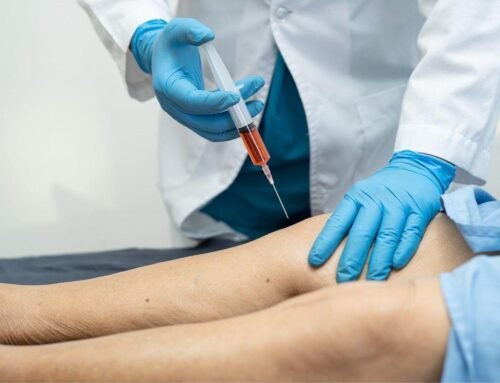Many people around the globe regularly experience pain, which can have an impact on daily activities, productivity, and quality of life. Treatments for managing pain are designed to reduce or eliminate pain while enhancing a patient’s quality of life. Medication, physical therapy, surgery, psychological interventions and complementary therapies are some of the treatment options available. A systematic approach is necessary for effective pain treatment that takes into consideration such as patient’s medical background, specific needs and preferences.
However, there are two different approaches when it comes to pain treatment. These are traditional pain treatment and Regenerative treatment.
Traditional pain management includes the use of medications, surgery, and physical therapies. Despite the risks and potential negative effects, these treatments are frequently practiced. Instead of addressing the root cause of the pain, they focus on its symptoms. Pain management medicines like opioids, nonsteroidal anti-inflammatory drugs (NSAIDs) and muscle relaxants are frequently prescribed.
The way that regenerative treatment functions is by promoting the body’s inherent healing mechanisms. Prolotherapy is one of the basic regenerative treatments. During the process, a solution containing dextrose, a sugar solution, an anesthetic and other natural substances are injected. The tissue is irritated which causes an inflammatory reaction. After that, the body sends healing cells to the area to encourage tissue growth.
Another choice for treating pain is surgery, especially for people who experience chronic pain from ailments like arthritis, herniated discs or spinal stenosis. Surgery is invasive, though and carries the possibility of side effects like bleeding, infection and nerve injury. Even after surgery, recovery can take a while and some patients might need procedures to handle problems.
Physical therapy is also an option, which seeks to reduce pain by enhancing muscle flexibility, strength and range of motion. Back pain, neck pain and joint pain are a few of the diseases that physical therapy can help with. It can take a while, though and some patients might not see effects for a few weeks or months.
There are a number of things to take into account when comparing Prolotherapy and traditional pain control techniques. The fact that Prolotherapy is simple to perform and doesn’t require drugs or surgery is one of its primary benefits. This implies that patients can stay away from any possible negative effects and issues related to these procedures. Instead of just treating symptoms, it goes after the underlying source of pain. Prolotherapy can offer long-lasting pain relief for chronic pain disorders like arthritis, back pain and joint pain by encouraging tissue growth and repair. Traditional pain management techniques, on the other hand, may only offer short-term relief and patients may need to keep taking medications or getting physical therapy to control their pain.
Prolotherapy can also be done in a doctor’s office and is a fairly quick process. The process usually causes the patient only minor discomfort, and soon afterward they can resume their regular activities. Surgery and physical rehabilitation, on the other hand, may necessitate a few weeks or even months of recuperation. Patients who are considering Prolotherapy should speak with their specialists to determine if it is an appropriate treatment option for their individual needs. Always consult your doctor before undertaking an alternative therapy, and be sure to inform them about your treatment.
If you are suffering from pain, consult with our best orthopedic doctor in Pune. Dr. Vikram Rajguru is India’s first Interventional Regenerative Orthopedic and OrthoBiologic surgeon and has helped many people recover from pain with the help of regenerative techniques.




